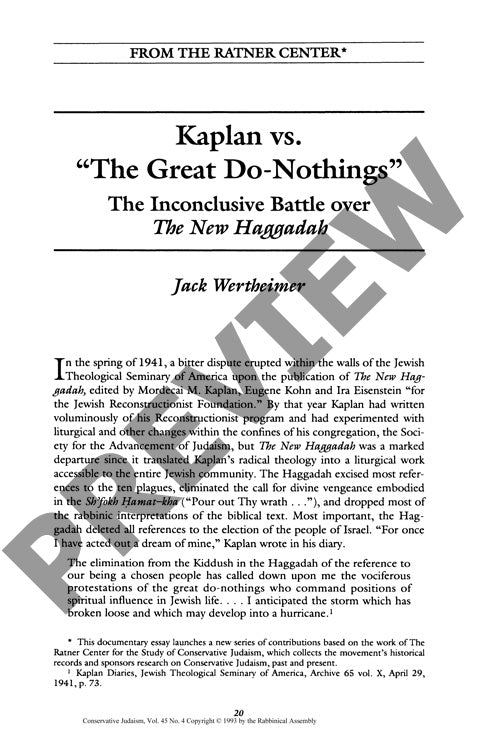Kaplan Vs the Great Do Nothing the Incon
Couldn't load pickup availability
In 1941, a revolutionary Passover Haggadah sparked a crisis at American Judaism's intellectual center, exposing deep fault lines in Conservative Judaism's religious identity. When Mordecai M. Kaplan published The New Haggadah, stripped of references to divine vengeance, the ten plagues, and Jewish chosenness, his colleagues at the Jewish Theological Seminary unanimously condemned his radical departure from tradition. Drawing on previously unexamined faculty correspondence and Kaplan's personal diaries from the Ratner Center archives, this research traces how Seminary leadership, particularly President Louis Finkelstein and Professor Louis Ginzberg, confronted Kaplan's translation of Reconstructionist theology into liturgical practice. Though faculty meetings and extensive correspondence revealed clear theological and halakhic violations, the Seminary proved ultimately unwilling or unable to dismiss Kaplan. This paralysis stemmed from competing pressures of academic freedom, financial considerations, and the fundamental challenge of defining Conservative Judaism's boundaries. The controversy emerged as a watershed moment for Conservative Judaism, revealing the movement's unresolved tensions between preserving tradition and embracing modernity, while highlighting the institutional difficulties of managing theological dissent within its flagship seminary.

More Information
-
Physical Description
-
Publication Information
Published 1993
ISBN
-
Publication Credits
Jack Wertheimer

